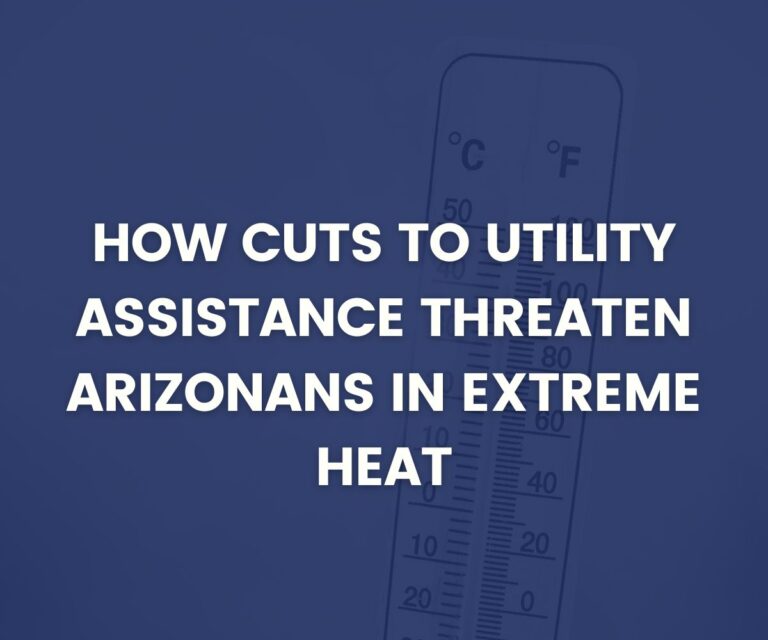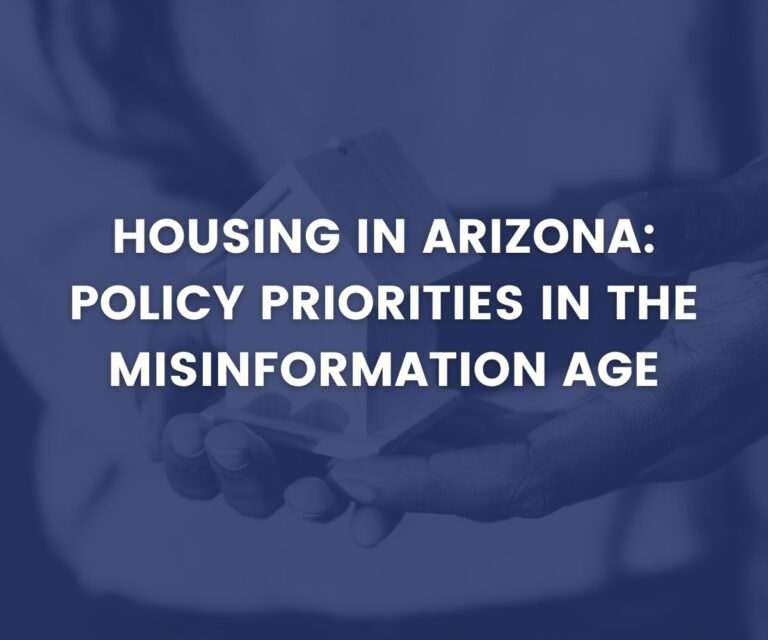
2022 Governor's Budget Misses the Mark
Every January, Arizona’s legislative session begins with the Governor’s State of the State speech and unveiling of annual priorities and proposed budget. And this session—Governor Ducey’s last—presented a major opportunity. Despite the lingering pandemic, Arizona’s revenues have reached historic highs in large part due to the multiple federal economic rescue packages and temporary unemployment insurance expansion. According to the Joint Legislative Budget Committee (JLBC), Arizona has $1 billion in ongoing and $2.1 billion in one-time revenues. This is in addition to billions of dollars in unspent federal COVID relief dollars. Visit AZCenter’s State Budget 101 page to learn more.
Yet despite all these available resources, Governor Ducey’s final budget fails to (yet again) make meaningful investment in all Arizona communities. In this moment of fiscal abundance, elected officials can build a people first economy for Arizona—supporting all working people and people struggling to find a stable well-paying job, where all children can reach their full potential and are protected from hardship and poverty, and where everyone has health coverage and can get the care they need without fear of financial ruin. The state budget can help Arizonans most hurt during the pandemic and address long-standing racial and economic inequities. This year, AZCenter has a host of legislative priorities for 2022. Unfortunately, the Governor’s budget goes in the opposite direction, doesn’t go far enough, or completely misses these opportunities. Below is a summary of how the Governor’s speech and budget measure up:
WHAT THE GOVERNOR’S BUDGET GETS WRONG:
Proposing additional tax cuts that impact the State’s ability to provide necessary supports and services to Arizona residents. Last year, Governor Ducey signed one of the largest tax cuts in Arizona history—with most of the benefits going to very wealthy households (who already have the smallest tax bills as a share of their income). This year, the Governor’s budget includes $132 million in new tax cuts.
Diverting state dollars from public education to private schools or other education methods not overseen by the state of Arizona. The Governor’s budget includes a $2.4 million increase to provide private school education vouchers to 1,400 students.
Racial disparities and inequitable funding standards are ripe in the K-12 public education system in Arizona and Governor's Ducey’s Results Based program is no exception. Results-based funding awards are largely reflective of the background of students in a school and not necessarily the impact that a school has on the student’s learning. The Governor’s budget continues to pick winners and losers by expanding Results Based Funding by $60.9 million and shifting the awards from standardized tests to the unreliable and often suspended letter grade system for Arizona schools.
WHERE THE GOVERNOR’S BUDGET DOESN’T DO ENOUGH
Expanding access to affordable, higher education and preventing increases in student debt. While the Governor’s budget proposal adds $12.5 million to the new Promise Grant, a state grant program for Arizona resident that are Pell-eligible and first-year students — these funds are only applied after Pell grants and scholarships, forcing some students to rely on loans to cover costs beyond tuition and fees. The Governor’s budget continues to suspend the $43 million statutory requirement to the Student Financial Aid Trust Fund. Instead, depositing only $10 million while university students continue to pay 1% of their tuition to the fund.
Improving access to and adequacy of unemployment insurance to existing and new participants. During the COVID-19 pandemic and economic emergency, hundreds of thousands of unemployed workers learned first-hand just how inadequate and inaccessible the unemployment insurance (UI) system is in Arizona. While the federal government stepped in to allow many workers to temporarily qualify, Arizona’s stingy benefits, steep and confusing eligibility criteria, and old, unreliable application system make UI out of reach for many workers who need it. The Governor’s budget includes $43 million in fiscal year 2024 and 2025 to replace the state’s unemployment insurance system, with Federal funds to be used in fiscal year 2023 to begin the project. While rebuilding a UI system centering workers is crucial, the Governor’s budget does not expand the criteria for qualifying for unemployment insurance benefits
Investing in reentry and community-based services for justice-involved individuals. The Governor’s proposal adds $6.1 million for substance abuse treatment. Last year more than 8 out of 10 individuals were released from the Department of Corrections in need of substance abuse treatment. While these funds will serve an additional 2,527 individuals, currently less than 2 out of 10 individuals have access to substance abuse services. With an annual cost of more than $1 billion, the Governor’s budget fails to make a significant investment in support services for all justice-involved individuals.
WHAT THE GOVERNOR’S BUDGET MISSES COMPLETELY:
The Governor’s budget fails to make the following crucial investments:
Restoring and expanding access to key programs to support low-income families, like the Supplemental Nutrition Assistance Program (SNAP, formerly known as food stamps) and cash assistance through the Temporary Assistance for Needy Families (TANF) program.
Addressing Arizona’s growing affordable housing and homelessness challenges by building more affordable units, providing more housing assistance for those struggling with rent, and protecting more tenants from eviction.
Investing in Arizona Tribal Nations through revenue sharing agreements and expanding infrastructure and workforce development in rural communities.
Improving access to resources that allow immigrants and mixed-status households to fully participate in the economy, as many of them were hardest hit during pandemic and least likely to receive assistance from the government.



